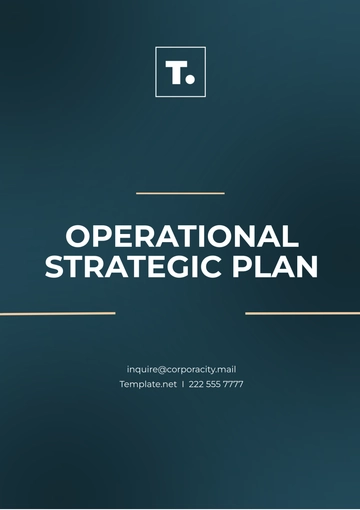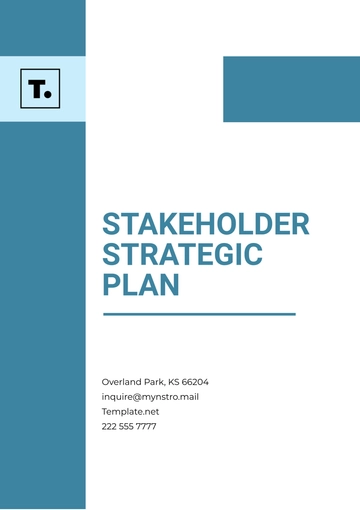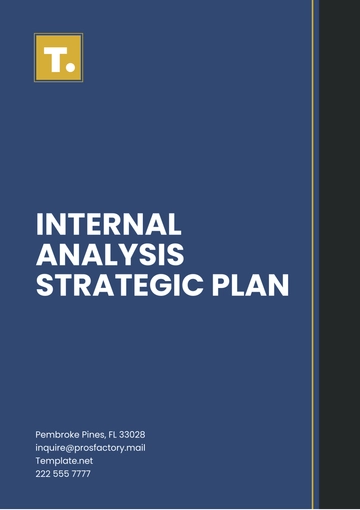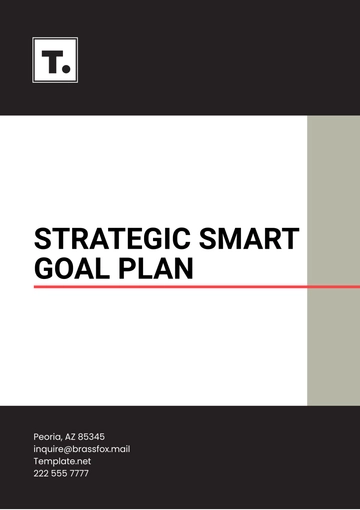Free Climate Change Sustainability Strategy
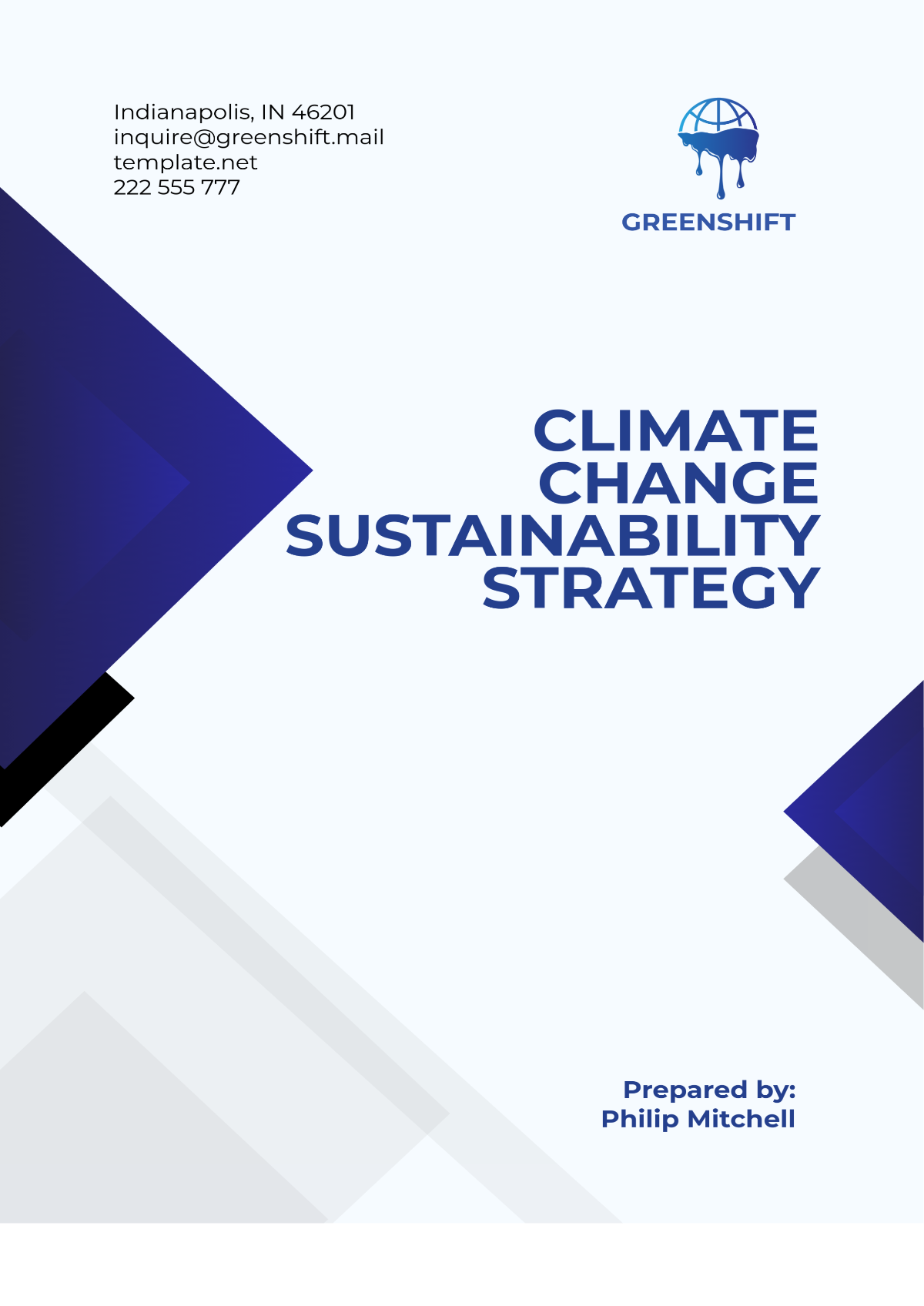
I. Introduction
This Sustainability Strategy Plan outlines our approach to reducing greenhouse gas emissions, promoting renewable energy, and fostering sustainable practices in alignment with global climate goals. [Your Company Name] is committed to combating climate change through actionable strategies, innovative solutions, and global partnerships.
Purpose
To create a comprehensive roadmap addressing climate change through innovative and sustainable strategies. The strategy covers energy efficiency, resource conservation, community engagement, and policy advocacy.
II. Renewable Energy Adoption
Renewable energy is at the core of sustainable development, offering a viable alternative to fossil fuels. [Your Company Name] aims to expand access to and investment in renewable energy solutions, fostering innovation and scalability. Through this focus, we will mitigate carbon emissions and reduce reliance on non-renewable resources.
Solar Energy Expansion: Advocate for large-scale solar farms and subsidies for residential solar panels.
Wind Energy Development: Invest in wind energy infrastructure in areas with high wind potential.
Hydropower Initiatives: Promote sustainable hydropower projects that minimize ecological disruption.
Energy Storage Solutions: Develop cutting-edge storage technologies to enhance the efficiency of renewables.
Public Awareness Campaigns: Educate stakeholders on the benefits and necessity of renewable energy adoption.
III. Sustainable Land Use and Agriculture
Sustainable land use and agriculture are critical in reducing deforestation, promoting biodiversity, and ensuring food security. By adopting environmentally friendly practices, [Your Company Name] will lead initiatives to protect natural habitats and promote regenerative agriculture.
Reforestation Projects: Launch large-scale tree-planting campaigns to restore degraded ecosystems.
Sustainable Farming Practices: Encourage crop rotation, organic farming, and reduced pesticide usage.
Urban Green Spaces: Collaborate with cities to create parks and green belts that offset urban emissions.
Land Conservation Policies: Advocate for stricter regulations to protect forests and wetlands.
Community Training Programs: Train local farmers in sustainable practices for long-term benefits.
IV. Corporate Collaboration
Collaborating with corporations is essential to driving sustainability at scale. By aligning with businesses, [Your Company Name] will amplify its impact and integrate sustainability into supply chains and operations globally.
Carbon Offset Programs: Partner with companies to establish carbon-offsetting initiatives, including tree planting.
Green Supply Chains: Promote the adoption of eco-friendly manufacturing and logistics practices.
Sustainability Benchmarks: Collaborate with corporations to set measurable sustainability goals.
Incentivizing Eco-Innovation: Offer grants for research and development in sustainable technologies.
Transparent Reporting: Encourage public disclosure of sustainability progress by partner organizations.
V. Energy Efficiency Metrics
Energy efficiency is a key driver in reducing emissions and conserving resources. Monitoring energy efficiency metrics helps in identifying areas of improvement and measuring progress. Progress toward energy efficiency goals is steady, with major advances in lighting solutions. Smart building adoption requires additional investment and strategic focus.
VI. Emissions Reduction Efforts
Reducing emissions is vital to combat climate change. Tracking emissions reduction efforts ensures accountability and progress. Energy production shows significant progress, while transportation and agriculture require targeted strategies to meet goals. A reassessment of timelines may be necessary for manufacturing.
Source of Emissions | Current Emissions | 2050 Goal |
|---|---|---|
Transportation | 1,200 MT | 1,000 MT |
Manufacturing | 2,800 MT | 2,500 MT |
Agriculture | 950 MT | 900 MT |
Energy Production | 2,700 MT | 3,000 MT |
VII. Water Resource Management
Water is a vital resource that must be preserved and managed effectively. This section highlights current initiatives and progress in sustainable water management. Water recycling efforts are on track, with significant adoption of drip irrigation enhancing resource efficiency. Continued focus on reducing water wastage is recommended.
Metric | Current Level | 2025 Target |
|---|---|---|
Water Recycling Rate | 18% | 30% |
Reduction in Water Wastage | 15% | 25% |
Adoption of Drip Irrigation | 55% | 70% |
VIII. Policy Advocacy
Effective policies provide a foundation for achieving large-scale sustainability goals. [Your Company Name] will work closely with governments and policymakers to create regulations that encourage sustainable practices and penalize unsustainable actions.
Legislative Proposals: Advocate for renewable energy mandates and stricter emissions standards.
Carbon Tax Implementation: Support policies that incentivize reduced carbon footprints.
International Collaboration: Partner with global entities to create unified climate goals.
Policy Monitoring: Track the impact of enacted policies and suggest improvements.
Community Engagement: Mobilize public support for sustainability policies through education campaigns.
IX. Community Engagement and Education
Community involvement is essential for driving grassroots sustainability efforts. [Your Company Name] will implement programs to educate and engage communities in sustainable practices.
Workshops and Training: Host workshops on recycling, energy conservation, and green living.
School Outreach Programs: Educate students about climate change and sustainable practices.
Volunteer Initiatives: Encourage community participation in tree planting and cleanup drives.
Local Partnerships: Collaborate with local organizations to amplify sustainability initiatives.
Feedback Mechanisms: Use surveys and town hall meetings to adapt programs based on community input.
X. Conclusion
[Your Company Name] will expand partnerships, enhance data monitoring systems, and invest in innovative solutions to accelerate sustainability efforts. By strengthening collaboration with stakeholders and improving transparency, the organization aims to achieve its long-term goals effectively. Regular reviews of this strategy will ensure that the plan remains relevant and impactful in the face of changing environmental challenges.
- 100% Customizable, free editor
- Access 1 Million+ Templates, photo’s & graphics
- Download or share as a template
- Click and replace photos, graphics, text, backgrounds
- Resize, crop, AI write & more
- Access advanced editor
Promote environmental responsibility with the Climate Change Sustainability Strategy Template from Template.net. Fully editable and customizable, this template is perfect for outlining actionable sustainability goals and initiatives. Personalize it easily in our AI Editor Tool to suit your organizational needs. Its comprehensive structure ensures effective planning and measurable impact on sustainability efforts.


















